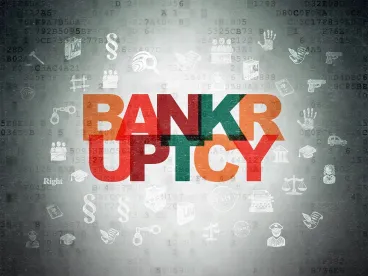The Coronavirus Aid, Relief and Economic Security Act of 2020 (“CARES Act”) which Congress approved last week, together with the Small Business Reorganization Act of 2019 (the “SBRA”) which became effective on February 19, 2020, will make Chapter 11 bankruptcy protection much more attractive for small business debtors. Together, the two new pieces of legislation not only streamline existing rules governing the efforts of small businesses and individuals to restructure successfully under Chapter 11 of the Bankruptcy Code, but the CARES Act raises the maximum debt level to qualify from $2,725,625 to $7,500,000, thereby expanding access to this form of relief to thousands of businesses. Moreover, the SBRA which fortuitously took effect last month just as COVID-19 was beginning to impact U.S. businesses, makes it easier for owners to continue to own their businesses and makes it more difficult for creditors to contest Chapter 11 cases. SBRA also provides one useful benefit for creditors through changes to the preference laws.
Expansion of the Small Business Opportunities Under the Bankruptcy Code
The CARES Act, which raises the debt threshold for companies and individuals to qualify to file as a small business debtor from $2,725,625 to $7,500,000, works in concert with the SBRA which added a new subchapter V to Chapter 11 of the Bankruptcy Code to make it easier and less expensive for small businesses to successfully reorganize. The SBRA makes the Chapter 11 plan process for small businesses simpler, faster and cheaper and makes it easier for existing owners to retain their ownership interests. A small business debtor is defined as a business entity or an individual that is engaged in business whose aggregate non-contingent debts (excluding debts to affiliates or insiders) do not exceed $7,500,000 and which elects to be treated as a small business.
The SBRA’s key provisions include:
-
Only the small business may file a Chapter 11 plan, but the debtor must file its plan within 90 days of the date it files its bankruptcy petition, except in certain circumstances;
-
A standing trustee similar to those appointed in Chapter 13 cases will be appointed to oversee each small business case;
-
A creditors committee will not be formed;
-
The Chapter 11 plan can modify the rights of a creditor secured by a security interest in the debtor’s principal residence if the loan secured by the residence was not used to acquire the residence but was used in connection with the debtor’s business;
-
The Court can confirm a debtor’s plan without the support of any class of claims as long as the plan does not discriminate unfairly and is deemed to be fair and equitable with respect to each class of claims;
-
To be fair and equitable, the Chapter 11 plan must provide that all of the debtor’s projected disposable income to be received during the length of the plan will be applied to make payments under the plan for a period of 3 to 5 years.
The SBRA will enable small businesses to quickly and inexpensively move through the bankruptcy process. But small businesses which have debts between $2,725,625 and $7,500,000 will have only a year to take advantage of the statute since the CARES Act contains a sunset provision that will reduce the debt threshold back to $2,725,625 on the one-year anniversary of the bill’s enactment. As in all Chapter 11 cases, creditors will need to be vigilant to ensure that Courts properly evaluate Chapter 11 plans, especially those that lack creditor support, and that their rights are properly protected.
Changes to Preference Laws
The SBRA made several significant changes to existing preference laws which creditors have welcomed. Trustees and debtors in possession have broad authority to file lawsuits to recover preferential transfers which were made 90 days prior to the date the bankruptcy case was filed, or in the case of insiders, one year. In addition, under the prior law if the amount of the transfer was less than $13,650, then the trustee or debtor in possession would have to file the lawsuit to recover the transfer in the federal district where the defendant resides, not in the district where the bankruptcy case is pending. The SBRA raised the threshold for non-insider defendants from $13,650 to $25,000 so that claims of less than $25,000 must be filed in the district where the defendant resides. In addition, the SBRA added as a requirement that, before filing the lawsuit to recover a preference, the trustee or debtor in possession must exercise reasonable due diligence and must “. . . take into account a party’s known or reasonably knowable affirmative defenses . . .” before filing the lawsuit. Due to costs and logistics, preference suits are rarely filed outside of the district where the bankruptcy case is pending, so raising the threshold to $25,000 effectively immunizes most transfers less than $25,000 from recovery. In addition, the SBRA’s due diligence requirement will result in a reduction of the number of preference lawsuits.





 />i
/>i

